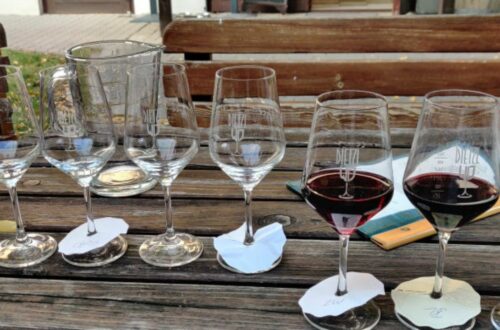
How do you identify a Blauer Zweigelt red wine from Austria?
Austria is best known for the quality of its dry or sweet white wines, made from both autochthonous Grüner Veltliner and Riesling or botrytised dessert wines from Welschriesling. However, it also produces many excellent red wines made from local grape varieties such as Blauer Zweigelt and Blaufränkisch.
In fact, Blauer Zweigelt is even the most common red grape variety in Austria! So let’s get to know it!
How do you identify a Blauer Zweigelt red wine from Austria?
Zweigelt wines are usually a rich red color with simple cherry flavors and sometimes a bit of spice or earthiness. They feel soft and smooth in your mouth with fruity tastes like cherry and raspberry, often with a spicy kick at the end. They’re kind of like Beaujolais wines, easy to drink and good for different times.
What is Blauer Zweigelt (and the difference with Zweigelt)?
Let’s make one thing clear first : Blauer Zweigelt and Zweigelt are the same grape variety. Blauer Zweigelt is one of the names that we give to Zweigelt, among others such as Zweigelt Blau or even Rotburger.
It is Austrian’s most significant red grape variety. It was created by Dr Fritz Zweigelt in 1922, by crossing Blaufränkisch and St Laurent, two other red grape varieties.
It ripens easily and early and is sensitive to diseases and frost.
What are the characteristics of Blauer Zweigelt?
Wines made from Zweigelt often have a deep, rubis colour. The red fruit, such as cherry mostly and sometimes raspberry, is often very straightforward. They can also have some spicy aromas that adds nuance to the nose. In some cases, you may also come across earthy or herbal notes.
On the palate, these wines are soft, ie with low or melted tannins with fruit of the forest flavours (cherry, raspberry, blackberry…) and can have a spicy finish. These wines are often medium-bodied with high to medium acidity.
Zweigelt is often compared to Gamay, the grape used in Beaujolais wines from France. Both Zweigelt and Gamay tend to produce light to medium-bodied red wines with lively acidity, vibrant fruit flavors (like cherry and raspberry), and soft tannins. They’re known for their approachability and versatility, making them great choices for easy-drinking reds suitable for a variety of occasions.
In which region is Blauer Zweigelt grown?
Zweigelt is the most widely planted grape in Austria so of course, you can find some in every wine region.
However, you will mostly find it in Niederösterreich (Lower Austria, the region nearest to Slovakia). It actually is the most important grape variety with 1812 ha of vines. Moreover, it is the sole grape variety permitted for the DAC.
In Niederösterreich, you can find it in Kremstal, where it has 307ha of vineyard or in Kamptal, especially near Gobelsburg, south-east of Langenlois. However, it it is mostly grown in Carnuntum and Thermenregion.
Unique to Carnuntum is a style created in 1992, known as Rubin Carnuntum. It was originally a blend of Zweigelt and Blaufränkisch but it is now pure Zweigelt and is aged for a minimum of 6 months in barrels.
ANECDOTE : Carnuntum and Thermenregion used to form a great region called Donauland up until 1993.
In Burgenland, in the Rosalia DAC more precisely, Zweigelt represents 19% of the plantings. The leading grape variety, Blaufränkisch represents only 22%. So Zweigelt is really a close second.
Zweigelt also grows in Vienna, Sudoststeiermark and Weststeiermark, but more locally.
Worldwide, you can find Zwiegelt in Slovakia and Hungary and even in the USA and Canada!
How should I serve Blauer Zweigelt red wine from Austria?
With their low tannins, Zweigelt wines are usually best served slightly chilled at around 14-16°C (57-61°F). It makes it the ideal pairing form summer grilling!
But that’s my take on the subject, feel free to see what other experts have to say on the matter here.
Conclusion : How do you identify a Blauer Zweigelt red wine from Austria?
You can identify a Blauer Zweigelt red wine from its characteristics. It is a deep ruby-coloured wine, with cherry aromas, medium body and low tannins. For this last reason, it is best served slightly chill and works wonders in summer for a grilling party!
If you’re looking for other food pairings with Zweigelt wines, I’ve written a whole post on it, go check it out!







